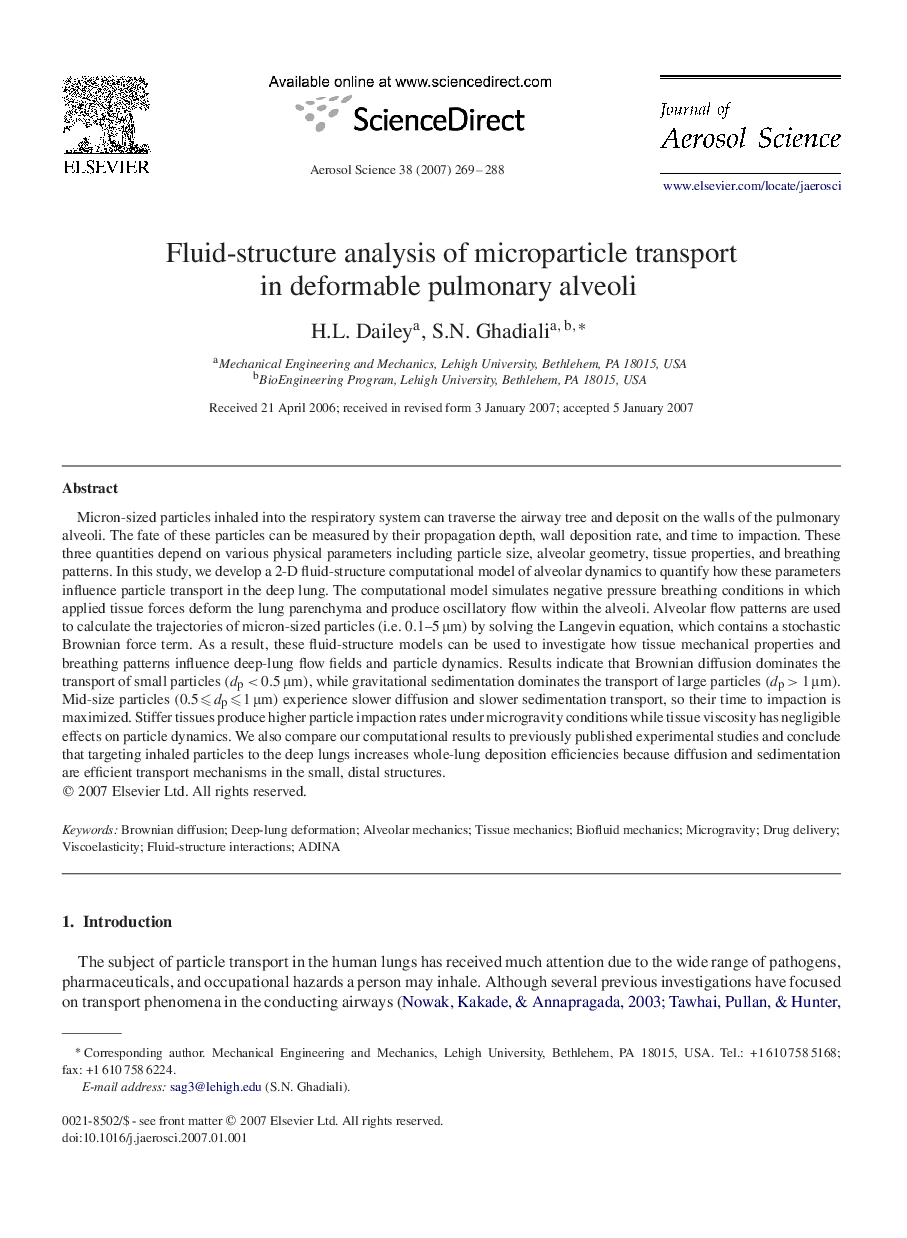| کد مقاله | کد نشریه | سال انتشار | مقاله انگلیسی | نسخه تمام متن |
|---|---|---|---|---|
| 4453223 | 1312144 | 2007 | 20 صفحه PDF | دانلود رایگان |

Micron-sized particles inhaled into the respiratory system can traverse the airway tree and deposit on the walls of the pulmonary alveoli. The fate of these particles can be measured by their propagation depth, wall deposition rate, and time to impaction. These three quantities depend on various physical parameters including particle size, alveolar geometry, tissue properties, and breathing patterns. In this study, we develop a 2-D fluid-structure computational model of alveolar dynamics to quantify how these parameters influence particle transport in the deep lung. The computational model simulates negative pressure breathing conditions in which applied tissue forces deform the lung parenchyma and produce oscillatory flow within the alveoli. Alveolar flow patterns are used to calculate the trajectories of micron-sized particles (i.e. 0.1–5μm) by solving the Langevin equation, which contains a stochastic Brownian force term. As a result, these fluid-structure models can be used to investigate how tissue mechanical properties and breathing patterns influence deep-lung flow fields and particle dynamics. Results indicate that Brownian diffusion dominates the transport of small particles (dp<0.5μm), while gravitational sedimentation dominates the transport of large particles (dp>1μm). Mid-size particles (0.5⩽dp⩽1μm) experience slower diffusion and slower sedimentation transport, so their time to impaction is maximized. Stiffer tissues produce higher particle impaction rates under microgravity conditions while tissue viscosity has negligible effects on particle dynamics. We also compare our computational results to previously published experimental studies and conclude that targeting inhaled particles to the deep lungs increases whole-lung deposition efficiencies because diffusion and sedimentation are efficient transport mechanisms in the small, distal structures.
Journal: Journal of Aerosol Science - Volume 38, Issue 3, March 2007, Pages 269–288